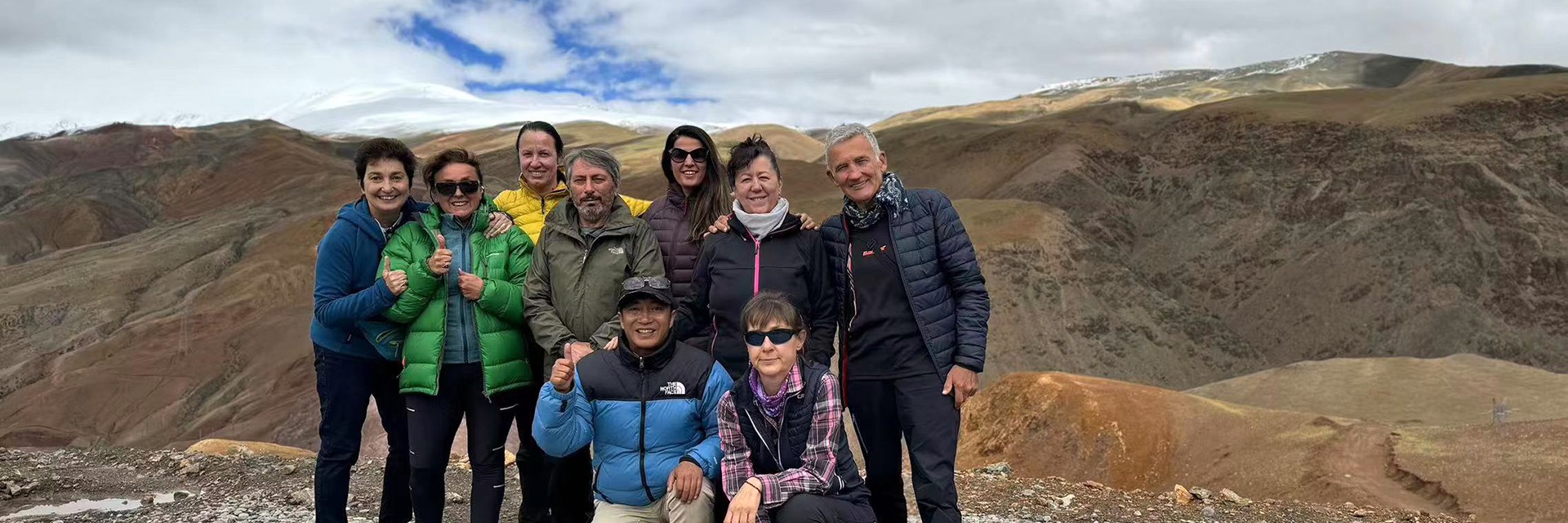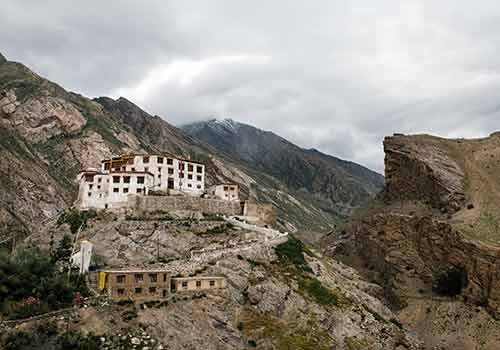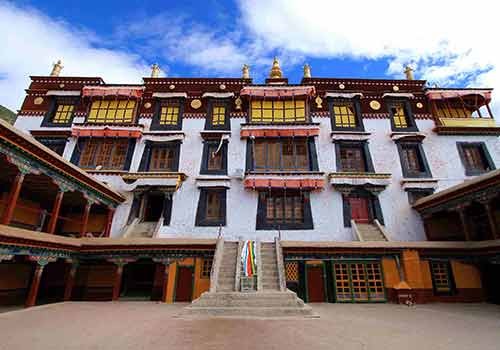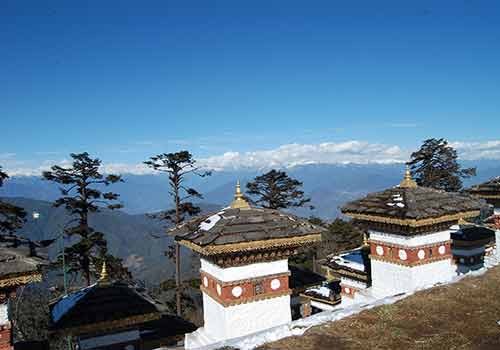With a distance of 5000 kilometers between Beijing and Kathmandu, you have more options than flying. The road journey from Beijing to Kathmandu is a popular tourist route. The surface adventure begins with a visit to Beijing's Forbidden City and Great Wall, followed by a ride on the world's steepest railway to Lhasa. After a two-day acclimatization period in Lhasa, the Great Himalayan road journey to Kathmandu begins. You will travel through two historic cities, Gyantse and Shigatse, and a diversion to see the world's tallest mountain, 8455m Everest. The Himalaya Range, holy lakes, glaciers, steep gorges, dense woods, and friendly locals will accompany you to Kathmandu.
Beijing Lhasa Kathmandu
- Duration: 15 Days
- Diffculty Level: Moderate
- Destination: Nepal and Tibet
- Best Time: Apr-May | Sep-Oct
- Activity: Tour and Sightseeing
- Max. Altitude: 4348m
Highlights
- Beijing's traditional must-see attractions
- The Great Wall tour
- Palace and Monasteries
- breathtaking alpine landscape
- Snow-capped mountains and lakes
- Potala Palace, a UNESCO World Heritage Site
- Traditional Tibetan handicrafts
- Mount Everest
- Sightseeing around Kathmandu Valley
Itinerary
When your international flight arrives in Beijing, you will be met by a private car and driven to your pre-arranged accommodation. The remainder of the day is yours to do as you like.
Today is a guided tour of Beijing's traditional must-see attractions, including the Forbidden City, Tiananmen Square, and the Summer Palace. These attractions provide visitors with an idea of how ancient Chinese emperors ran their countries, how they raised their families, how they spent their spare time, and how they sacrificed gods.
The Great Wall tour demonstrates that China was once one of the world's most powerful countries. The Great Wall, which stretches thousands of kilometres and has been named as one of the world's eight wonders, has safeguarded ancient Chinese against enemy assault from its north side for more than 1000 years. The "graceful" Mutianyu Great Wall, 80 kilometres northeast of Beijing, has the greatest quality of all Wall sections, with 22 antique watchtowers, one every kilometre. (If you don't want to walk, you can take the cable car.)
The Tibet Train's Xining to Lhasa section features a breathtaking alpine landscape with snow-capped mountains, lakes, and huge plateau plains dotted with nomads, yaks, Tibetan antelope, and other wildlife. Tibet Railway is the highest railway in the world. The 1,956-kilometer train route stretches across a broad highland terrain with an average elevation of 4,300 meters above sea level and a maximum elevation of 5,068 meters.
On the sixth day, the train will go across the Qinghai Tibet Plateau. You'll pass by Yuzhufeng, Kunlun Mountain's main peak, the World Natural Heritage Kekexili Naturel Preserve, the Yangtze River's supply Tuotuo River, Naqu Grassland, and Cuona Lake. The train will arrive in Lhasa in the afternoon or evening, depending on the train schedule. At the railway station, you will be greeted by your tour guide.
Continue Train to Lhasa
Train to Lhasa, Arrival at Lhasa, and Overnight at Lhasa
The visit will begin at Potala Palace, a UNESCO World Heritage Site. It is located at an elevation of 12,139 feet above sea level. It's a 13-story structure with about 1,000 rooms and statues, stupas, murals, and antiques. Then proceed to the Jokhang Temple, a UNESCO World Heritage Site. It is a Buddhist spiritual center in Tibet. Bakhor Street, just outside the temple, is bustling with pilgrims and street sellers selling traditional Tibetan handicrafts like prayer wheels and jewelry.
Explore Drepung Monastery in the morning, which was built in 1416 and is one of Tibet's "three greet" Gelug monasteries. Before moving to the Potala Palace, we will also visit Ganden palace in the Drepung. In the afternoon, visit Sera Monastery, founded in 1419, and one of Tibet's "three great" Gelug monasteries. The Monks debate, which takes place between 3 and 5 p.m., is the pinnacle of the day.
Drive from Lhasa to Shigatse in the morning. On the route, drive through the Gampala pass (4790 m), and tourists will see Yamdrok-Tso (4400 m). Many snow-capped mountains surround the lake, and clients can see Holy Mount Nyenchen Khangsar (7191m), the highest mountain near Lhasa, in the distance. Gyantse was Tibet's third-largest city in the past (after Lhasa and Shigatse). Tourists visiting Gyantse will see the famed Pelkor Monastery and Gyantse Kumbum. We arrive in Shigatse, Tibet's second-largest city, after an hour and a half of traveling. Tourists in Shigatse will visit Tashilunpo Monastery.
Drive to Lhatse, a little village with a restaurant for tourists. Then go to Shegar, where tourists will be able to see Mt. Everest in the distance if the weather is clear enough. Tourists will arrive at Rongbuk Monastery after a 4 to 6-hour trip, but on the way, they will pass via one of Tibet's highest passes (pang la pass, 5050m), from which they will have a panoramic view of the world's five tallest peaks.
Tourists can observe the sun rising on the top of Mt Everest in the morning if the weather is clear, and after visiting the base camp, travel to Tongla pass for a panoramic view of the Himalaya mountain range. Then it's down to Kyilong, which is surrounded by forest and framed by ice-capped mountains. At the boundary, the elevation is 2600 meters.
Drive clients to the Sino-Nepal border - Kyirong - in the morning, when a tour guide will assist them in crossing the border. After clearing immigration, a Nepalese driver will meet you at the border and transport you to Kathmandu. The drive to Kathmandu is difficult, but the environment is stunning; along the way, you may witness steep canyons and rivers. Because Nepal's roads are in poor condition, this 160-kilometer journey takes a full day.
The Kathmandu Valley's Durbar Square is one of three durbars (royal palace) squares. It is home to the Hanuman Dhoka Palace Complex, which served as the royal Nepalese residence until the nineteenth century and hosted important rituals. The golden spire of the 5th-century Swayambhu stupa is draped with a colorful fluttering of prayer flags and caps on a hill overlooking the Kathmandu Valley, offering amazing views over the city of Kathmandu. The last stop on our tour today is Patan City, the second-largest city in the Kathmandu Valley. Patan's center point Durbar Square is a World Heritage Site that is completely packed with sanctuaries, the Golden Temple, which is an exceptional Buddhist Monastery that was established in the twelfth century, is an enormous rectangular structure with three rooftops and a copper overlaid veneer with pictures of Buddha and Avalokitesvara where there are Buddha pictures and delineations on the dividers.
Pashupatinath is Nepal's most prominent Hindu temple. The temple and images were rebuilt by succeeding rulers as the old buildings on the site were demolished by Moslem invaders in the 14th century, and its stone linga was shattered to dust, yet it rose again behind their retreating backs. Bouddhanath is one of the largest stupas in South Asia and the epicenter of Tibetan Buddhism in Nepal. The white mound rises 36 meters above the ground. For decades, Tibetan merchants paused and gave prayers at the stupa, which is located on an ancient trade route to Tibet. Bhaktapur Durbar Square is a collection of pagodas and shikhara shrines centered on a brick and wood palace with fifty-five windows. The area, which exhibits Nepal's old arts, is one of the Valley's most attractive architectural showpieces.
Today we will drop you at Tribhuwan International Airport or you can plan a further tours in Nepal or Bhutan.
- Hotel pick-up before and drop-off after the tour
- Hotel and Airport Service on everywhere
- All entrance fees to tourist attractions listed in the itinerary
- One dinner included in Lhasa
- Local English Speaking Tour guide
- AC comfortable tourist vehicle
- Tibet border Kyilong to Kathmandu road transfer
- All hotels in the tour are included
- Accommodation at EBC is a guesthouse.
- Lunch and Dinner on the entire trip
- All kind of Snaks not included
- Air ticket or train ticket to and from Lhasa
- Personal expenses, Insurance, and medical expenses
- Tipping to staffs
Additional Info
Accommodation
Yolo Hike provides you with the best possible stay available for your entire Journey. The lodging along the way is based on a Twin-to-Twin sharing basis and also a Three basis in some of the places due to the condition of Tibet’s standard. On the other hand, we supply the best hotels and guesthouses along the route but if you want more of the services you always have an option to upgrade package or pay extra cash.
Meals and Minerals
This package provides you with Breakfast for your meals, Throughout the tour. You will consume your breakfast in hotels where available which are specified for Health and Better Taste and have to pay on your own for Lunch and Dinner. If you need extra service than available you always have a choice to upgrade your package.
Travel Permit
For a Tibet tour, a Tibet Travel Permit is required. Its price is included in the tour price. Send us copies of your passport and China visa 20 days ahead of time, and we'll apply for the permit after you plan a Tibetan tour with us. We will notify you and mail your permit to your hotel in China by express as soon as we receive it from the Tibet Tourism Bureau.
In some rare circumstances, our personnel will deliver it to you at the airport or train station. We can almost ensure that you will acquire your permit during the times when Tibet is open to international visitors, based on our experience.
Precautions to follow
Most persons are affected to some extent by a lack of oxygen at high elevations (above 2,500 m). The human body needs time to establish physiological mechanisms to cope with the lower oxygen levels as altitude rises. Acclimatization is the term for this procedure. High altitude sickness necessitates the use of Diamox (Acetazolamide) tablets. Please visit your doctor for a prescription, since these tablets must be started three days prior to your arrival in Kathmandu. This medication must be taken for the duration of the trip. Those who are allergic to sulfa medicines can take Gingko Biloba, a natural supplement that can be purchased online.
During the trip, participants will be taught simple, yet effective, acclimatization techniques. Throughout the tour, the party will be accompanied by a competent doctor who is highly prepared to deal with high altitude sickness and other illnesses that may emerge. All necessary medications and equipment, including life-saving oxygen cylinders and Gamow bags, will be carried by the doctor.
First Aid Kit
You must carry a First Aid Kit during your Kailash Mansarovar journey, Diamox, aspirin, painkillers, Lip balm, Mustard, oil, Vaseline, Plasters, TCP, salt, mint, Vicks for sore throats are all items you should have in your first aid kit or personal medical kit (average hiking kit for mild injuries/ our guide will also have).
If you have any other health issues, seek medical advice before changing your medicine for high altitude. there are never sure about the climates and how the weather changes, if you have never accomplished the high-temperature before, altitude sickness can be a major issue for you so, having a First Aid Kit with you can be a partner in necessity. We also have medically trained and tested Guides who have high knowledge about the use of First Aid which helps you in an emergency.
Alternative Evacuation
The Chinese government has a fundamental regulation that everyone must enter and exit together. As a result, everyone should travel in a group. However, if one of the members becomes ill or has another problem while on the journey, he or she should be evacuated promptly because there is no hospital or medical assistance available. In this situation, we will have to organize additional services for which the evacuating passenger will be responsible. Every passenger is required to acquire travel/medical insurance to cover any unexpected expenses. Yolo Hike doesn’t sell any travel insurance so, make sure you have all the insurance, we can suggest you the best as per the experience about our previous clients. If you have further inquiries, feel free to email us at [email protected]
FAQs
Q1. Can I travel to both Everest Base Camp and Tibet with the same package?
Yolo hike offers a researched and tested itinerary that has provided our clients with a handful of choices and to plan their own itinerary. We have multiple packages where you can find Everest Base Camp and Tibet tour in the same package. If you are not satisfied with the package, be sure to contact us to Plan your Trip yourself. Simply email us at [email protected]
Q2. Which is the best season to Travel to Tibet?
In general, the best time to visit Tibet depends on what part of Tibet you are traveling still between April till October can be the best time. Most tourist destinations, however, can be visited at any time of year depending on what people want to see or do. Lhasa, Everest Base Camp (North Face), Shigatse, and other towns, for example, can be visited all year, however, the weather can be harsh during the winter months. Visiting Everest Base Camp in Tibet, however, is best done between April and May or September and October. The sky is clear and brilliant during these months, with exceptional visibility that allows for breathtaking views of the Himalayas and the night sky.
Q3. How to get Tibet from Nepal?
While not available to international passengers, there is a vehicle route where personal Jeep and Bus operates directly from Kathmandu to Lhasa, covering the 980-kilometer journey in around 12 hours. Once you've passed Gyirong Town on the G214, the bus will take you to the Friendship Highway. If you are traveling with an agency then we will manage it for you.
Q4. Is it possible for Indians to visit Tibet?
Conventional Indian sightseers and Indian explorers are the two kinds of Indian guests to Tibet. Conventional Indian sightseers who are not intending to visit Mount Kailash or Lake Manasarovar can acquire a Tibet Visa (Tibet Travel Permit) similarly that other worldwide guests from around the world can apply for visa.
Q5. Is it possible to visit Tibet without a visa?
Because the Tibet Autonomous Region is a Chinese province, Chinese visas are necessary. Please read the China passport & visa section for requirements and fees. You must also obtain a Tibet travel permit in order to enter Tibet. Joining a tour group is the simplest way to do this.
Similar Trips
![Tibet Trekking]()
Ganden to Samye Trek
Duration: 10 Days![Drepung Monastry Lhasa]()
Best of Lhasa Tour
Duration: 5 Days![Nepal Tibet Bhutan Tour]()
Nepal Tibet Bhutan Tour
Duration: 14 Days




